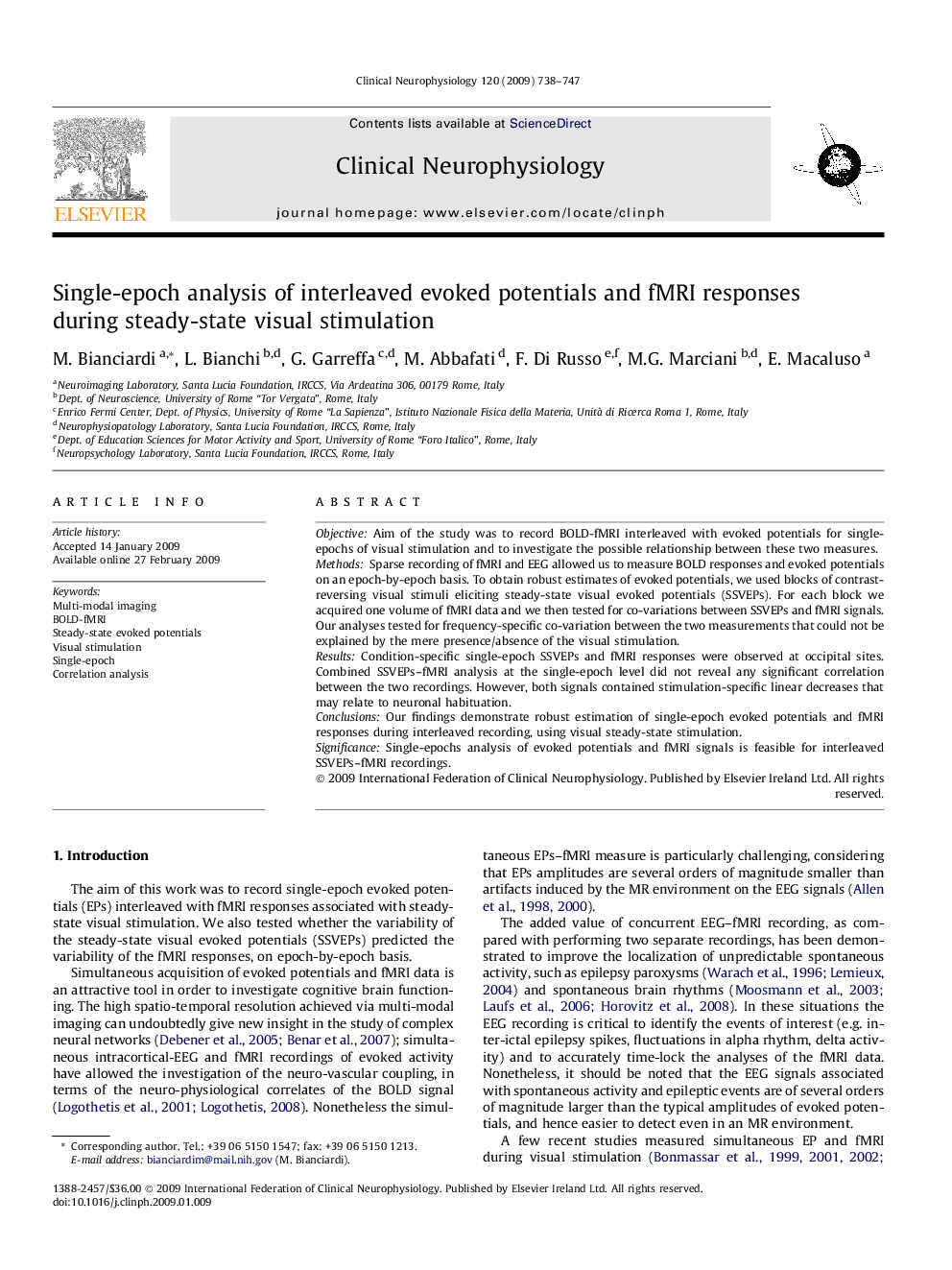| Article ID | Journal | Published Year | Pages | File Type |
|---|---|---|---|---|
| 3046318 | Clinical Neurophysiology | 2009 | 10 Pages |
ObjectiveAim of the study was to record BOLD-fMRI interleaved with evoked potentials for single-epochs of visual stimulation and to investigate the possible relationship between these two measures.MethodsSparse recording of fMRI and EEG allowed us to measure BOLD responses and evoked potentials on an epoch-by-epoch basis. To obtain robust estimates of evoked potentials, we used blocks of contrast-reversing visual stimuli eliciting steady-state visual evoked potentials (SSVEPs). For each block we acquired one volume of fMRI data and we then tested for co-variations between SSVEPs and fMRI signals. Our analyses tested for frequency-specific co-variation between the two measurements that could not be explained by the mere presence/absence of the visual stimulation.ResultsCondition-specific single-epoch SSVEPs and fMRI responses were observed at occipital sites. Combined SSVEPs–fMRI analysis at the single-epoch level did not reveal any significant correlation between the two recordings. However, both signals contained stimulation-specific linear decreases that may relate to neuronal habituation.ConclusionsOur findings demonstrate robust estimation of single-epoch evoked potentials and fMRI responses during interleaved recording, using visual steady-state stimulation.SignificanceSingle-epochs analysis of evoked potentials and fMRI signals is feasible for interleaved SSVEPs–fMRI recordings.
